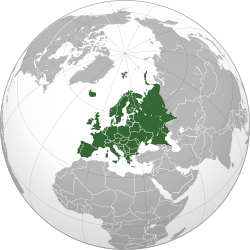News, Politics, Business, Tech And The Arts On Arabian Post
European leaders face mounting urgency to address critical deficiencies in their defence structures as uncertainty surrounds the reliability of U. S. backing. Many capitals hold onto hope that Donald Trump will honour his pledged security guarantees for Ukraine, even though concrete commitments remain vague. Europe's Defence Gaps Expose Growing Reliance on U. S. Support captures the mounting tension between Europe's persistent reliance and its growing intent to fill capability gaps.
Germany, Spain, Italy and other nations have sharply criticised the continued weakness in strategic air-defence systems, reconnaissance and long-range precision strike capabilities-areas where Ukraine has pressing needs. These critical shortfalls, compounded by years of underinvestment, highlight why European governments still look to Washington for reinforcement despite the risk of unpredictable support. The situation is pressing enough that a former NATO Secretary-General has advocated urgently forming a European-led deterrence force-supported by U. S. logistics, intelligence and air-defence-to reinforce Europe's standing until NATO membership or more binding guarantees are secured.][3], [Wikipedia][4], [AP News][5])
At the Paris summit, around thirty countries acknowledged the shortcomings in their national defence capabilities. A proposal for a“reassurance force”-focused on training and support, not frontline deployment-won traction, conditional on U. S. participation. Yet the U. S. role remains uncertain, given Trump's failure to drive peace negotiations and limited clarity on the nature of his security pledge. Analysts warn that without U. S. leadership, any European troop deployment risks credibility and effectiveness.
Eastern European countries such as the Baltics have voiced particular concern. Reports indicate that the U. S. plans to reduce defence and security assistance programmes-including Section 333 and the Baltic Security Initiative-have provoked confusion in Tallinn, Riga and Vilnius. While the administration frames the reduction as a push for European self-sufficiency, Baltic states say they have seen no official notification and fear damaging impact on training, intelligence sharing and arms procurement. Congressional figures on Capitol Hill have raised alarm, calling the move“dangerous” for deterrence.
See also New Guidelines on Blood Pressure Set by AHA Spark DebateMeanwhile, Russia's President Vladimir Putin has escalated tensions by declaring that any Western troops deployed to Ukraine would be legitimate military targets. His statement followed France's announcement of a postwar support package for Ukraine, backed by 26 nations. Ukraine's President Zelenskyy has called for deployment of thousands of Western troops to serve as a deterrent-though deployment is now being reframed as a limited“reassurance force” to support Ukraine away from active battle zones.
At the same time, the European Commission has advanced its strategic defence initiative, Readiness 2030-formerly known as“ReArm Europe”-to mobilise up to €800 billion in funding for collective defence capability building by loosening budget rules, issuing loans and repurposing EU funds. This initiative reflects Brussels's attempt to reduce dependence on U. S. support and invest in indigenous air-defence, drone production, artillery and broader military resilience.
These moves take place against a backdrop of deeper structural reform: the June NATO summit in The Hague produced a landmark agreement for member states-excluding Spain-to raise defence spending to 5 per cent of GDP by 2035, including both core military investments and broader resilience measures. This target marks a dramatic rise from the previous 2 per cent benchmark and reflects the urgency of reinforcing European capabilities amid lingering doubts about American commitment.
Notice an issue? Arabian Post strives to deliver the most accurate and reliable information to its readers. If you believe you have identified an error or inconsistency in this article, please don't hesitate to contact our editorial team at editor[at]thearabianpost[dot]com . We are committed to promptly addressing any concerns and ensuring the highest level of journalistic integrity. Legal Disclaimer:
MENAFN provides the
information “as is” without warranty of any kind. We do not accept
any responsibility or liability for the accuracy, content, images,
videos, licenses, completeness, legality, or reliability of the information
contained in this article. If you have any complaints or copyright
issues related to this article, kindly contact the provider above.
Most popular stories
Market Research

- United States Lubricants Market Growth Opportunities & Share Dynamics 20252033
- Daytrading Publishes New Study On The Dangers Of AI Tools Used By Traders
- Newcastle United Announce Multi-Year Partnership With Bydfi
- Ecosync & Carboncore Launch Full Stages Refi Infrastructure Linking Carbon Credits With Web3
- Utila Triples Valuation In Six Months As Stablecoin Infrastructure Demand Triggers $22M Extension Round
- From Zero To Crypto Hero In 25 Minutes: Changelly Introduces A Free Gamified Crash Course


















Comments
No comment